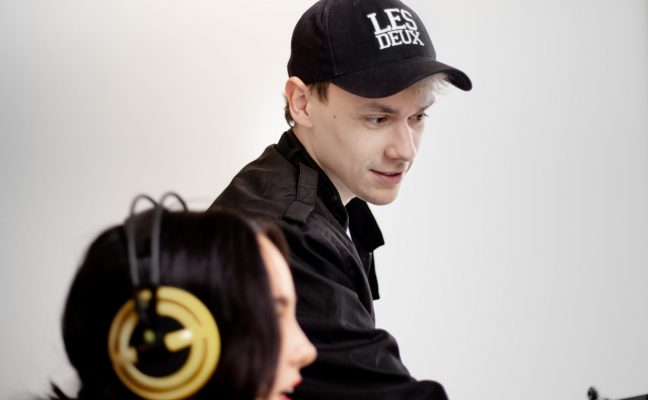The past 18 months, Producer Patrick O’Casey and his Cinematics team at Massive Entertainment has learnt a lot about working with distributed teams. Learn more about his takeaways and practical tips for working remotely in the video games industry in this article!
We came to the realization many years ago that one day distributed work would be the norm. I thought it would be the steady march of technology that would make it happen, and I wanted us to be prepared for that day. We also saw many advantages to a team that was good at distributed work, and ever since we had this realization we made sure that any new process or workflow would work even if we were not sitting next to each other.
Then 2020 happened, we all went home, and we had a chance to put all these ideas into practice.

We – my team at Massive Cinematics – have learned a lot about distributed teams over the last 18 months. This article isn’t going to explain everything about working remotely (there are some great resources out there that do), but it does share some of the things we’ve picked up; a few things that worked for us.
It’s crucial that you establish processes and habits during quiet times that are robust enough to handle periods of high stress. That’s a theme common to a lot of the things we’ve learned – you need to fine-tune those processes until they’re dependable and people trust them. I invest time making sure that our creatives have the support they need, that tasks are clearly defined and assigned, and that we’re all working according to the guidelines we co-create. I never regret doing this, and I always regret when I don’t.
It’s crucial that you establish processes and habits during quiet times that are robust enough to handle periods of high stress.
We keep and assign all our tasks in Shotgrid, but the specific technology platform isn’t important as long as it’s searchable and reliable. We keep tasks out of email (we really avoid email all together inside the team) and even though we make heavy use of chat apps we make sure to not assign the tasks in chat. If you let managers throw around tasks in chat then it’s only the friendliest and most approachable people on your team that will end up with a disproportionally large part of the burden. Keeping all the tasks in Shotgrid makes sure that the workload is transparent for everyone.
Meetings is the most valuable communication tool that we have, and it’s also the most expensive one to use. Like the careful craftspeople we are, we don’t abuse our most precious tool and therefore we use it for things where only meetings will work, such as problem solving, brain storming, building consensus and diffusing conflict.
Meetings is the most valuable communication tool that we have, and it’s also the most expensive one to use.
Meetings should not be used for communicating pure information. No real-time info dumps. If you need to inform the team of something, there’s a channel for that – write a list or make a video. People need time to reflect on detailed material if you want them to give a thoughtful response, so first share the information and arrange a meeting later to discuss it (and if you don’t need to discuss it, don’t book a meeting).
Daily sync meetings (that mostly serve to build team culture and create a sense of connection) are prefaced by a daily scheduled post in the chat app where everyone types up their issues or blockers. By the time we have the daily meeting most blockers are already solved. The remaining issues, usually things that require discussion, are then dealt with during the daily meeting.
Our daily meetings are semi-optional. No-one must attend, unless they’ve been specifically asked for. Some people enjoy meetings and thrive on the social interaction. That’s great. Welcome! Some people prefer to focus on their ongoing tasks, and that’s fine too. Without exception, we make sure that someone takes thorough meeting notes. That way everyone, especially managers, can keep abreast of what’s going on. However, everyone must be available for the meetings. If somebody calls on you because they need your input or opinion, you need to be ready to jump in.

Meetings can be good for building a positive team spirit, but they’re not the only way of creating a healthy culture, even online. As in the real world, team culture emerges mostly through small interactions, so there a few things that we make sure we keep doing (and remind each other of if they don’t happen). Some of them are straightforward like thanking people for their work and publicly praising good communications efforts, though some have more to do with our attitudes. This includes things like assuming a positive intent in all communications and being willing to fix things if you notice that they’re broken.
Like so many things around distributed teams, maintaining a healthy culture is about making time to refine routines and then sticking to them. If you make the effort to strengthen your working practices when you can, they’ll see you through the tougher times.
Reading and listening tips
- Graduating Thesis on Innovation Management from Copenhagen Business School: Virtual Team Culture – Hoe & Marinelli
- Book: Deep Work – Call Newport
- Book: It Doesn’t Have to be Crazy at Work – Jason Fried and David Heinmeier Hansson
- Book: Shape Up: Stop Running in Circles and Ship Work that Matter – Ryan Singer
- Book: The year without pants – Scott Berkun
- Book: ReWork – Jason Fried and David Heinmeier Hansson
- Podcast: Distribute – Matt Mullenweg
- Podcast/Book: Freakonomics – Dubner & Levitt
- Podcast: Akimbo – Seth Godin
- Website: Why great teams embrace remote work (https://info.trello.com/hubfs/How_To_Embrace_Remote_Work_Trello_Ultimate_Guide.pdf)









